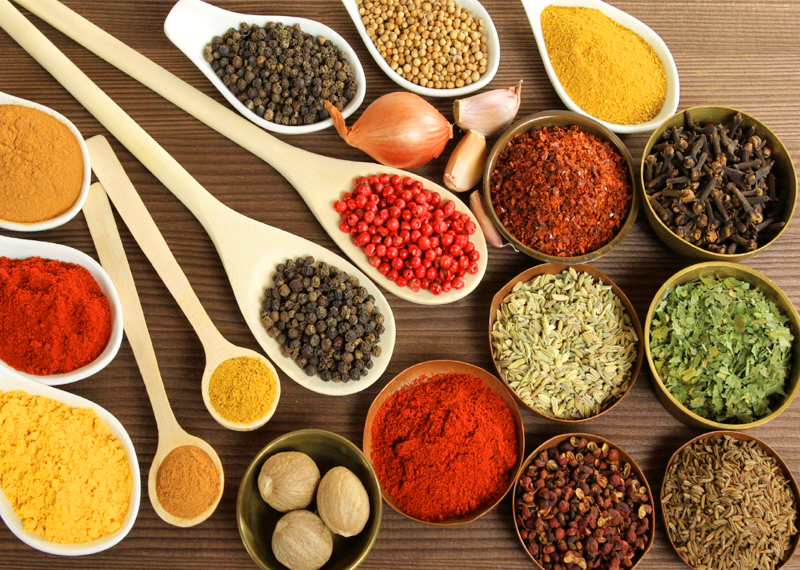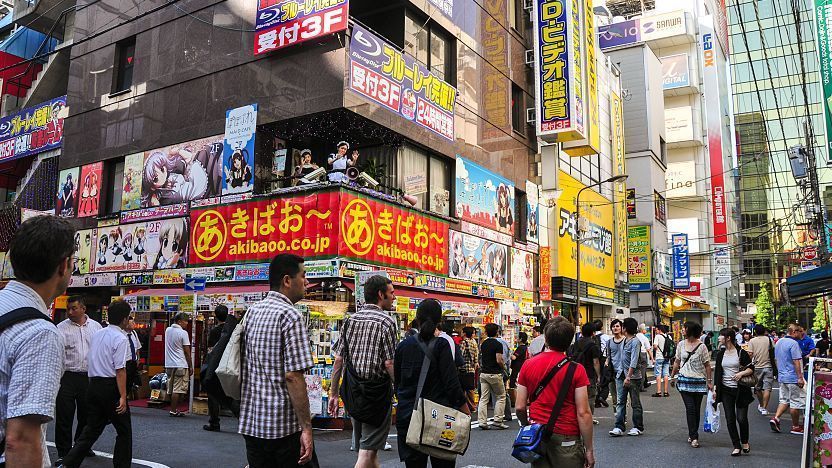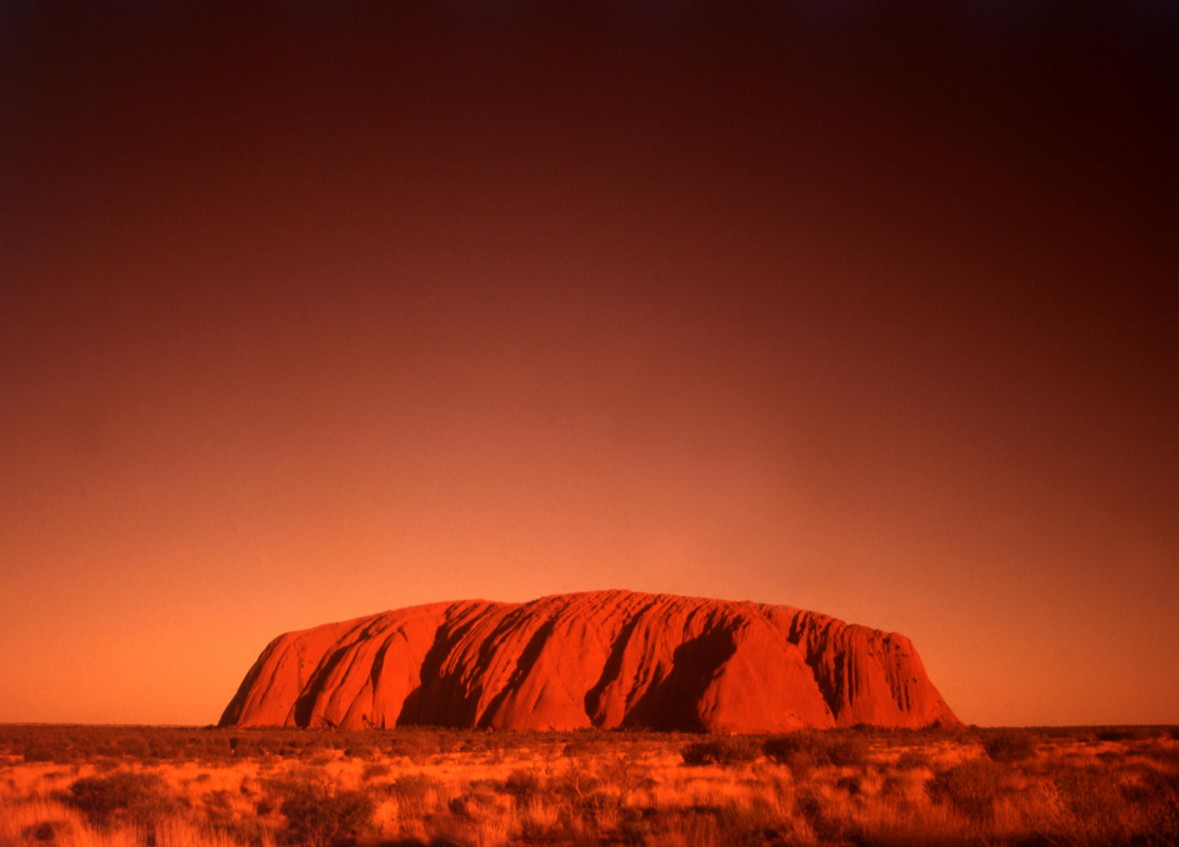Spice Up Your Life
After toying around with the idea of having Sushi for lunch in Antarctica, we decide to go for a more explosive meal in India. Entering a home in India, each of our senses is engaged, from the bedazzling colors and intricate details of the designs on the walls and the furniture, to the smells of the oils and fragrances in the air.

We sit on the floor around the little table that gathers the whole family everyday, as is a sacred tradition in Indian homes. Knowing that a single Indian meal can contain between 10 and 100 different spices, we brace ourselves for the journey our taste buds are about to embark upon. Surely enough, a festival of tastes explodes in our mouths; a perfect marriage of sweet, sour, savory, spicy, oaky and other tastes we cannot put into words, all in one spoonful. A true representation of everything that is Indian.
Herbs and spices have more disease-fighting antioxidants than most fruits and vegetables. To start with, among countless benefits, garlic destroys cancer cells, says Karen Collins, nutrition advisor to the American Institute for Cancer Research. “Studies suggest that one to two cloves weekly provide cancer-protective benefits.” Moreover, a USDA study found that, gram for gram, oregano has the highest antioxidant activity of 27 fresh culinary herbs.
A popular spice, cinnamon can lower blood sugar, triglycerides, LDL, and total cholesterol in people with type 2 diabetes. Aim for one-fourth to one-half teaspoon of cinnamon twice a day. On the other hand, paprika contains capsaicin, whose anti-inflammatory and antioxidant effects may lower the risk of cancer, and which is also found in cayenne and red chili peppers. There is no specific recommended dose, but moderation is probably the best way to go.
Ginger can decrease motion sickness and nausea; may also relieve pain and swelling associated with arthritis. Doses used in clinical trials range from 500 mg to 2,000 mg of powdered ginger; more than 6,000 mg can cause stomach irritation. Ginger can also hinder blood clotting, so if you are about to have surgery or are taking blood thinners or aspirin, be sure to talk to your doctor first.
As for turmeric, it contains curcumin, which can inhibit the growth of cancer cells. “Try to have 500-800 milligrams a day,” says Bharat Aggarwal, PhD, a professor of cancer medicine at the University of Texas M.D. Anderson Cancer Center. Moreover, rosemary stops gene mutations that could lead to cancer and may help prevent damage to the blood vessels that raise heart attack risk.
ZoomTech!
No day is perfect without new knowledge gained. For that, we venture almost 6,500 Km to the west to the epicenter of invention, Tokyo, Japan. Landing at Tokyo International Airport, we are greeted by the posters of Aimi Eguchi, a member of a Japanese pop band, that the public only recently discovered was a digital fake.
Shortly thereafter, we get acquainted with the concept of aidea shohin, meaning “idea products”, which are unusual gadgets that would be convenient to own but are not practical enough for mass production. We see a mattress with a built-in fan that cools itself up for those warm nights, a vibrating alarm pillow that will wake you up without disturbing your partner's sleep, a talking piggy bank that tells the kind of coin just put in and how much saved, long-distance phone pet feeders, hands-free umbrellas, and so many more inventions that make us just a little bit dizzy.
Have you ever sat at your desk, at work, eating a cold sandwich and wondered what it would take to have a warm meal in the middle of your long working day? Well, Thanko, an innovative gadget shop in Akihabara, Tokyo's premier electronics district, may have the answer.

Thanks to Japanese ingenuity, there is now a computer-heated lunchbox available. This special lunchbox can heat up its contents by simply plugging it into the PC’s USB port. It will keep any lunch well heated to be quite enjoyable even if it was prepared in the early mornings. Although it may not yet be available in Egypt, knowing that there is such a lunchbox available can be quite reassuring, especially if you often bring your own homemade lunch to the office.
The Perfect Sunset
Finally, for our final destination we take a short flight to the beautiful red deserts of Australia. As the Sun sets on this perfect day, we are embraced by the warmth of the red color in the sky and on the ground. The intense sandy smell in the warm Australian air, and the vast spaces around us provide us with the perfect contrast between feelings of total freedom and warm embraces. We reflect on the perfect day we have had and we look forward to many more like it.

The Red Australian Desert is named after its most striking characteristic; the reddest soils you are likely to ever have seen. Why is that? Why are the deserts in Egypt white, while those in Australia are red?
It is because of the climate. Soil is the product of rock erosion, which is caused by weathering. In climates such as Australia, the weathering is chemical; reactions like hydrolysis, hydration and oxidation are the cause of the red color, just like rust.
References
nasa.gov
andeantravelweb.com
discover-paris-france.com
faceadrenalin.com
my-indian-food.com
news.ninemsn.com
images.businessweek.com
science.nationalgeographic.com
about-peru-history.com
webmd.com
causeof.org
fitnessmagazine.com
images.businessweek.com
gondwananet.com
*The original article was published in the PSC Newsletter, 1st School Semester 2011/2012.